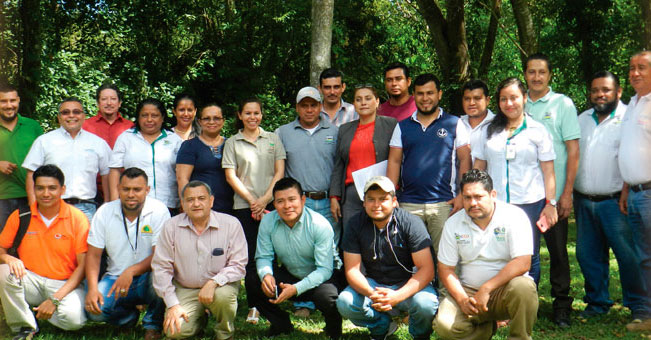- Four workshops were held where 164 participants from 45 organizations representing the government, academic, productive sector and some NGOs were present
On November 5, 7, 9 and 27, four workshops were held focused on presenting results and advances of the Nicaragua-Honduras Sentinel Landscape initiative, in order to provide a space for the exchange of information between decision makers and actors key in the sectors of environmental management, forest management, protected areas, livestock, cocoa, coffee and biodiversity. These events were held in the cities Matagalpa and Siuna in Nicaragua and Catacamas and La Ceiba in Honduras.
Around 164 participants from 45 organizations representing the governmental, academic, productive sector and some NGOs updated their knowledge on the Sentinel Landscape initiative, in addition to exchanging information about their projects and activities, which served to improve levels of coordination between organizations participants.
CATIE (Tropical Agricultural Research and Teaching Center), together with the CGIAR Research Program on Forests, Trees and Agroforestry (FTA), coordinates this initiative since 2012, where students from the center have conducted valuable thesis studies that have contributed to improve knowledge and research methodology in the Sentinel Landscape.
“The Nicaragua-Honduras Sentinel Landscape is a mosaic of forests, agricultural land, cattle ranches and agroforestry systems, covering 68,000 km 2 , including two biosphere reserves and 13 protected areas. This landscape also contains the largest forest area in Central America, ”said Norvin Sepúlveda, representative of CATIE in Nicaragua.
The initiative develops and implements a standardized matrix that includes a set of indicators and livelihoods to monitor the sustainability of the landscape in a wide variety of cultural, institutional and environmental environments.
Sepúlveda also indicated that socio-economic and biophysical baselines have been developed in conjunction with local universities and organizations.
For his part, José Manuel González, representative of CATIE in Honduras, mentioned that it is very important to have these databases available to organizations, to continue with studies and monitoring, as well as to strengthen local and national alliances.
In this regard, Alan Bolt, coordinator of the Collaborative Management Committee for the Peñas Blancas Protected Area and director of the Nature Understanding Center, said that CATIE’s support, through the initiative, has been very important for institutionalization of the committee and thesis studies carried out by students have been relevant to improve the research methodology.
More information:
Norvin Sepúlveda
Representative of CATIE in Nicaragua
nsepulveda@catie.ac.cr
Drafting:
Priscilla Brenes Angulo
Communication Assistant
Information and Communication Technology
priscilla.brenes@catie.ac.cr

